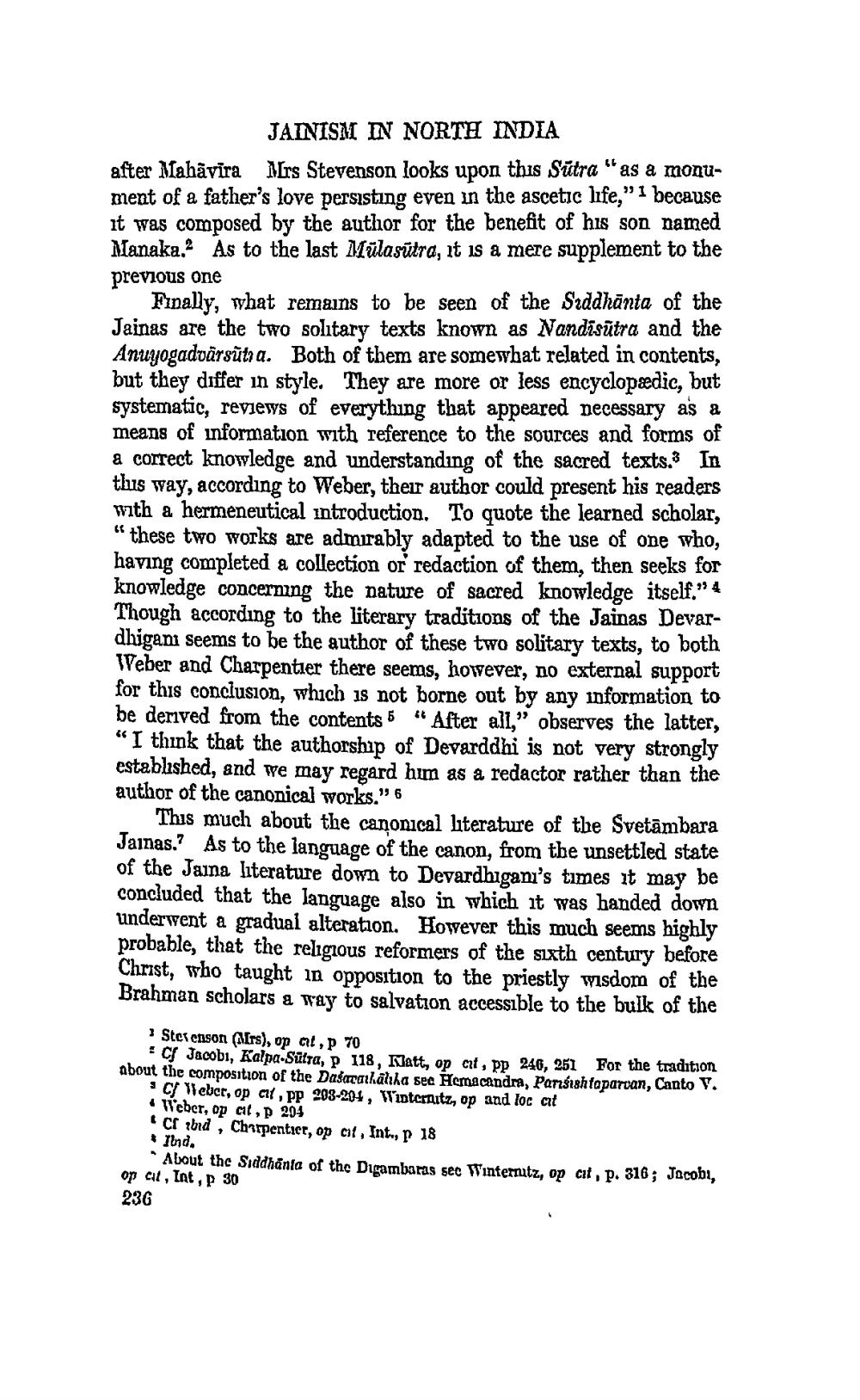________________ JAINISM IN NORTH INDIA after Mahavira Mrs Stevenson looks upon this Sutra "as a monument of a father's love persisting even in the ascetic life," I because it was composed by the author for the benefit of his son named Manaka." As to the last Mulasutra, it is a mere supplement to the previous one Finally, what remains to be seen of the Siddhanta of the Jainas are the two solitary texts known as Nandisatra and the Anuyogadvarsutra. Both of them are somewhat related in contents, but they differ in style. They are more or less encyclopaedic, but systematic reviews of everything that appeared necessary as a means of information with reference to the sources and forms of a correct knowledge and understanding of the sacred texts. In thus way, according to Weber, their author could present his readers with a hermeneutical introduction. To quote the learned scholar, " these two works are admirably adapted to the use of one who, having completed a collection or redaction of them, then seeks for knowledge concerning the nature of sacred knowledge itself." 4 Though according to the literary traditions of the Jainas Devardhigani seems to be the author of these two solitary texts, to both Weber and Charpentier there seems, however, no external support for this conclusion, which is not borne out by any information to be derived from the contents 5 "After all," observes the latter, "I think that the authorship of Devarddhi is not very strongly established, and we may regard him as a redactor rather than the author of the canonical works." 6 This much about the canonical literature of the Svetambara Jamas.? As to the language of the canon, from the unsettled state of the Jaina literature down to Devardhigani's times it may be concluded that the language also in which it was handed down underwent a gradual alteration. However this much seems highly probable, that the religious reformers of the sixth century before Christ, who taught in opposition to the priestly wisdom of the Brahman scholars a way to salvation accessible to the bulk of the * Stesenson (Mrs), op at, p 70 Cf Jacobi, Kalpa-Sutra, P 118, Klatt, op cit, pp 246, 251 For the tradition about the composition of the Dasacarkalha see Hemacandra, Parsishfaparvan, Canto V. CJ Tebet, op all, PP 208-201, Wintertutz, op and loc at * Weber, op al, 204 C ord, Charpentier, op cit, Int., P 18 Donde About the Siddhanta of the Diambaras ser interatz, op cit, p. 310; Jacobi, op cut, Int, p 30 236




